2018 is upon is. And the game of SEO is about to change (even though slightly).
There are SEO trends that you should definitely watch out for. That’s because in the future they might (and they will) become a MUST for any business.
Is that going to happen in 2018? Possibly.
And that’s why you should certainly start watching out for the following 8 definitive SEO trends.
1. Voice Search
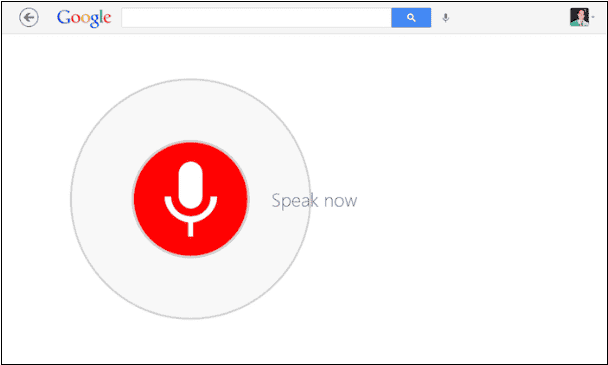
Voice search is more real than ever.
Ask Google for the temperature and it will tell you the current temperature and a forecast for your location.
Ask Google about the news and it will read off the latest headlines for you.
This is powerful! And people LOVE these features. That’s why voice search is inevitable.
Generally, we can speak four times faster than we can type. This means that voice search simply feeds our need to move fast.
It’s also extremely easy. Anyone would rather speak something out loud (unless the environment around them is not appropriate for that) instead of having to type it.
As I said, voice search is inevitable. And here are some statistics to back up my claim:
Okay, but how is voice search related to SEO? Well, it creates faster interaction.
And faster interaction leads to greater consumer retention and engagement — especially when the results are accurate.
To put it simply, people like voice search and voice search SEO is more real than ever.
However, we speak differently than we type. And that’s why your SEO strategy in 2018 should try using conversational terms and sentences.
2. Natural Language Queries
As I mentioned above, by 2020, around 50% of all searches will be completed through voice.
And voice searches use a more natural language than when people type.
This is inevitably going to result in the shift from exact match phrases to a broader match SEO.
This means that search engines will be able to easily interpret natural language. And thus…
We should begin shifting to longer-tail keyword searches with stronger intent and a higher mobile conversion rate.
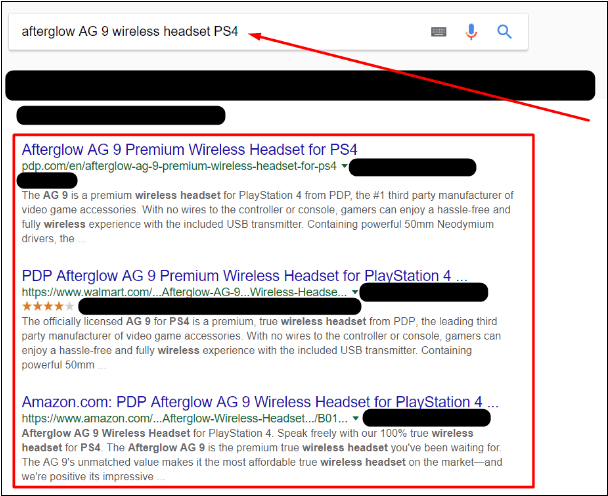
3. Rich Snippets Will Need Careful Restructuring.
Voice assistants pull answers from the rich snippet box on Google.
But first of all, what are “snippets” and what are “rich snippets”?
In our Google searches, we see extra information beneath the links. This is called a snippet. It consists of black lines of non-clickable text.
We also see a couple of big blocks of rich content. They are different depending on what we are looking for.
These additional lines beneath results are called rich snippets and they are meant to directly inform the user.
Here is a visual representation of what I just told you about.
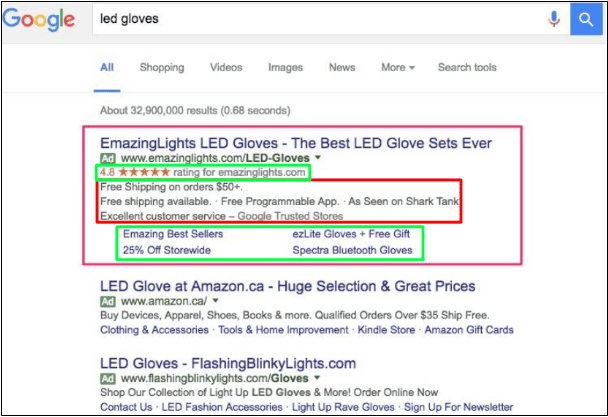
In the red box, you see a snippet. And in the green ones, you see rich snippets.
So do rich snippets rank you better in Google? No. But they make you more visible in the search results.
This allows you to get noticed by more people who are searching for whatever you are ranking for.
And if more people notice you, more people will click your link and go to your website.
As you can see in the image above, rich snippets can be different colors, different shapes, etc. They are easily noticed by people.
This means that by structuring your rich snippets better you’ll be getting a higher CTR (click through rate). And higher CTR, in turn, increases your potential sales.
Okay, but how do properly structured snippets look like?
You can check out Schema.org to find out. It features a step-by-step data structuring guide.
4. Page Speed
In today’s fast-paced world, people want everything (including information) immediately.
There is nothing more frustrating than finding EXACTLY what you’re looking for… but… having to wait 5 seconds for it to load.
If any of your website pages doesn’t load in 5 seconds, you’re screwed.
You can be sure that the people who would have landed on your website are going to be browsing your competitor’s website instead.
If you’re wondering how fast your pages should load, Google recommends 3 seconds or less.
Anything slower than that and people will be disappointed. Thus, your website traffic will suffer.
To see how the speed of your website stacks up, check out Google’s PageSpeed Insights.
Anyway, website speed is not something new. It has been a crucial SEO component for years.
But moving into 2018, it’s going to get EVEN more important to fulfill your customers’ needs in regards to speed of your website.
A HUGE part of your user experience will be relying on your website speed.
And you should always make sure your customers are perfectly satisfied with what they are getting from you.
Otherwise, not only your SEO will suffer, but your business as well.
5. The Rise Of “Linkless” Backlinks
“Linkless” backlinks are simply brand mentions without links.
Lots of people will mention your brand in their articles without you having to do anything about it.
BUT some of them will NOT include a link to your website.
In 2018, these “linkless” links are definitely going to rise. And you should take advantage of that.
That’s why we created the following 2-step process to help you turn them into REAL and valuable links to your website.
Step 1: Find Your Unlinked Brand Mentions Using Google Search
Generally, in order to make the most out of this, you’ll need to have some knowledge of Google’s advanced search operators.
But even if you don’t have such knowledge, you can still use the following search query in your Google Search:
“keyword/brand name/person name” -ownsite.com -twitter.com -facebook.com -google.com
It should look something like this:
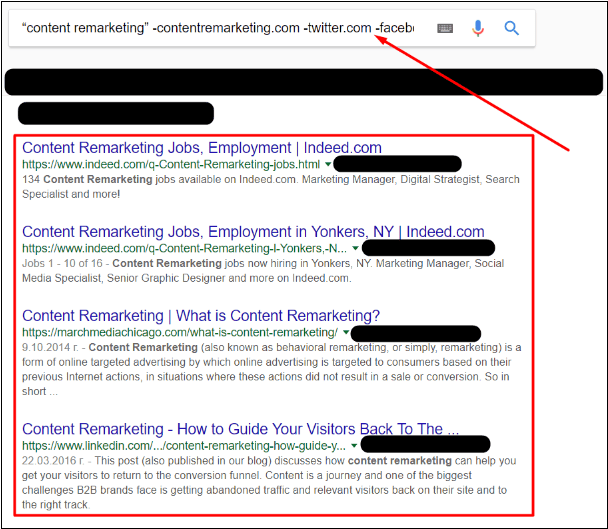
What this does is, it looks for mentions of that specific keyword, brand name or whatever on sites except for the popular social media websites and your own website.
This way you can find all the websites that have mentioned you.
Once you do that, you can start opening every single Google search result (they won’t be too much if you’re not a big player) and find all the mentions of your brand that are NOT linking to your website.
Step 2: Contact The Webmasters Of Those Websites
That’s the next logical thing, right? Once we have all the people who are mentioning us without linking to us, we can simply contact them.
But before you do that, here are a few things to keep in mind:
Don’t contact websites that you would NOT like to like to your website.
When contacting the ones you like, make sure your email is concise and to the point.
Usually, since they have already mentioned your brand without having to ask for it, they shouldn’t hesitate much to link to you (unless they have their own reasons for not doing it).
Don’t lose your time with the ones that are hesitant. Instead, focus on the ones that are more than willing to link to you (80-20 rule).
When applying this 2-step process, you should always be striving for AT LEAST 50% success rate. Before contacting anyone, make sure you have a script that will convert well.
Make sure you follow up with the people who didn’t respond to you. Most of them are likely to have missed your email. After all, the average person gets around 150 emails per day!
6. Personalization Of Search
Over the years, search engines have moved from a generic SERP to a more personalized experience for the customer.
That’s because of the introduction of newer input methods and the affinity of the users towards mobile, which is slowly replacing desktop (more about that in a moment).
They have simply resulted in SERPs becoming more personalized.
All search engines aim to provide accurate results to any user query.
However, with new indicators such as location and voice (which we mentioned earlier) it will be challenging for most websites to appear in a user’s SERP.
Currently, the margin of error is VERY small. And this margin of error is what will define how SEO evolves over the years to come, 2018 being no different.
To put it in simple terms, Google Personalized Search will continue to provide a personalized experience for its users.
The search results your potential customers see will continue to increase in relevance for the particular user.
This means we’ll have to be as specific as possible in what we are delivering.
This way people will be able to find EXACTLY what they are looking for on our website (which will rank better for their specific Google search).
7. Rank On Mobile Before You Rank On Desktop
2018 is the year in which brands MUST realize the need of putting mobile first, rather than the opposite (catering to mobile as an afterthought).
That’s because there is a HUGE possibility Google will decide to make 2018 the year it finally deploys its mobile-first-index.
But even if it doesn’t, brands still NEED to put mobile first.
After all, there is a study by BrightEdge, which found that 57% of traffic comes from mobile devices.
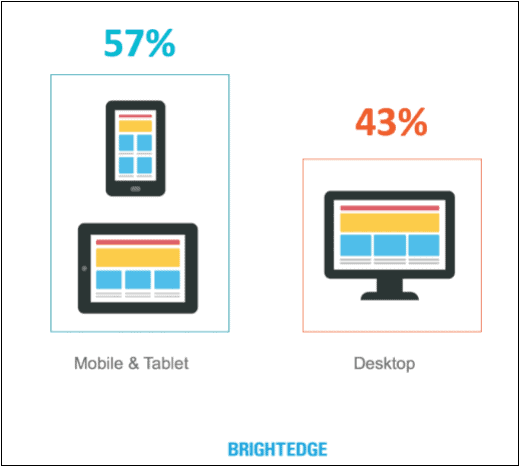
There is a significant difference between the way keywords rank on desktop and the way they do it on mobile. That’s why mobile first content is a MUST if we want to have the best chance of being visible in mobile search.
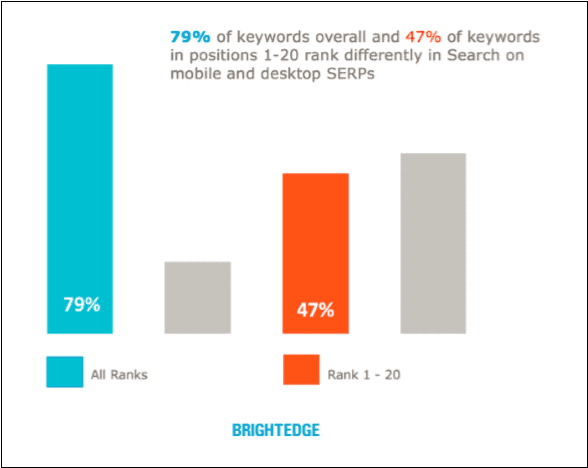
Mobile searches are all about context. And that’s why brands should provide the best results possible for any question that may occur in their prospect’s mind.
And talking about context… Here is a perfect place to mention that local SEO is going to become EVEN more popular in 2018.
Mobile users will be seeking for EVEN more content when they are on the go. And this creates a HUGE opportunity for businesses.
If a brand manages to combine a good mobile optimization with a successful strategy around the rise of voice search, this could be a game changer.
This is a great way to give your prospects relevant answers personalized specifically for THEM and THEIR needs. And thus, this could be a winning SEO strategy for the upcoming 2018.
8. Link Building Is Still Your #1 SEO Hack

Link building is definitely NOT going to disappear in 2018. In fact, it will be more important than ever before.
However, a great strategy that seeks out only quality links is a MUST in 2018. Without such strategy, you’re risking your whole reputation.
As you already know, you need links that add value and help you build an authority in your market.
Of course, this doesn’t always mean the best backlinks are the ones that come from the most popular websites. You need mostly sites that are relevant to your industry.
Referral traffic is still beneficial for your organic search rankings.
However, it is also important to start thinking of the link building process as something long-term and to have a complete strategy around it.
Such successful strategy will help you build relationships, powerful contacts, and links that are beneficial to your long-term growth.
But here comes a challenge for 2018.
Guest posts… To use or not to use…
Back in May, Google warned everyone who relies on guest posting too much for growing their links. They did that in order to control the spammy and questionable links.
And this calls for a more diversified link building strategy.
Instead of relying on single links that can bring successful results, we should be aiming for a complete backlink profile.
As I already mentioned, we simply NEED a good long-term link building strategy. And the sooner we form one, the better.
Conclusion
Some of the 8 trends we covered are almost here.
You should definitely watch out for each and every one of them on a weekly basis.
Make sure you don’t miss out on any of them because each of these trends can be exactly what your business needs in order to excel.
Subscribe to learn how to grow and scale your business through white labelling, starting with this free guide. Unsubscribe with one click at any time.
We hate SPAM and promise to keep your email address safe. Here’s our privacy policy.